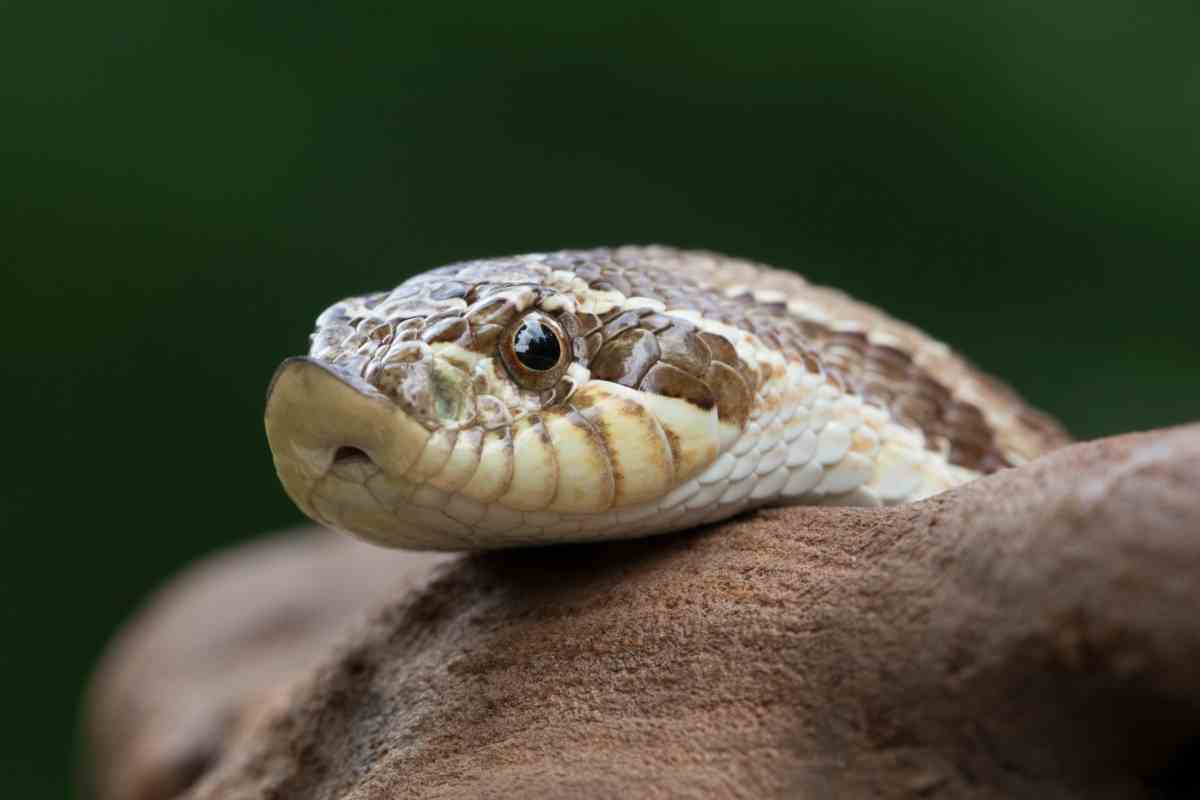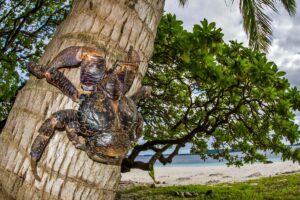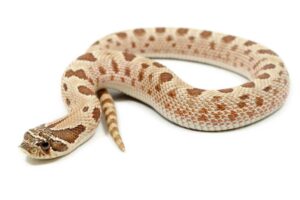The hognose snake is a unique creature found in the wild throughout North America. There are many different morphs of this snake, which can be confusing for enthusiasts and experts alike.
There are many different hognose snake morphs out there, but some are definitely more popular than others.
In This Blog Post – We’ll be taking a look at 21 of the most popular Western hognose morphs. Each one has its own unique characteristics and personality, so it can be fun to explore all of the possibilities out there.
Whether you’re a beginner or an experienced snake enthusiast, we hope you’ll find this post helpful and informative. Happy reading.
Table of Contents
21 Western Hognose Morphs You Should Know
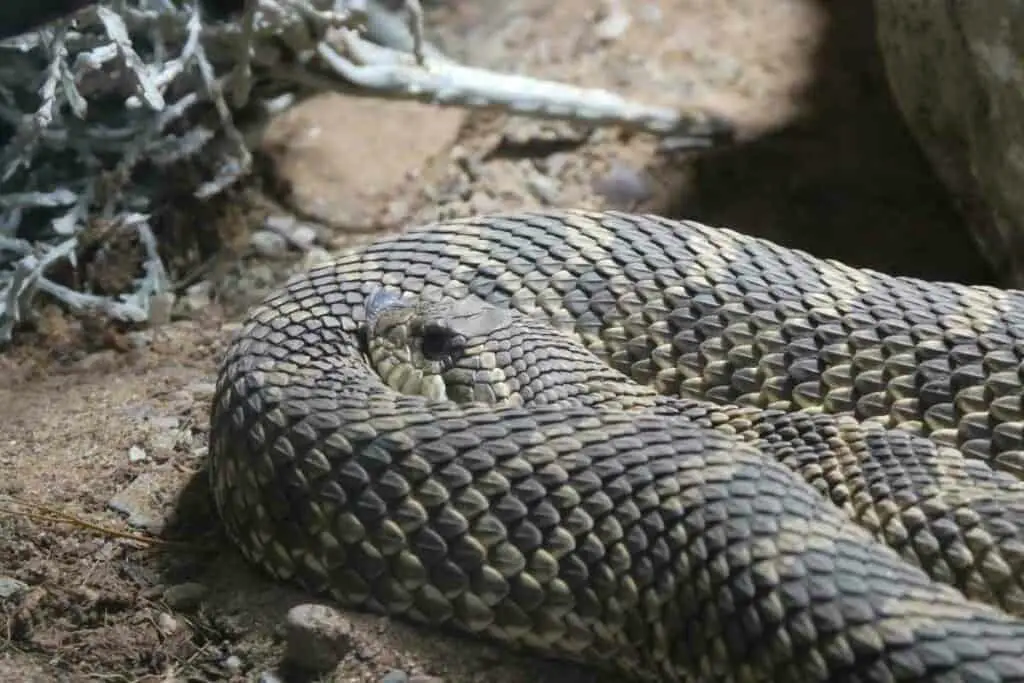
The Western hognose snake, or Heterodon nasicus, is a unique and easily identifiable snake found in the United States.
This species has a wide variety of color morphs, making them one of the most interesting snakes to observe.
1. Albino Anaconda Morph
The pale yellow scale-base of the western Albino Anaconda Hognose snake, a cross between the Albino and Anaconda Hognoses, has faint orange dots that are tiny at first and gradually expand as the snake grows.
It also grows quickly; it can reach up to 20 inches in length without exceeding 2 to 3 inches in girth.
The eyes are a glowing ruby red, and there is a very light pink blush on the face. This snake is generally gentle and calm but can be skittish if startled.
2. Albino Hognose Snake
Albinism is a rare genetic disorder that affects the production of melanin, resulting in a lack of pigment in the skin, hair, and eyes.

The Albino Hognose snake is one of the most popular morphs due to its distinctive coloring.
They have a pale yellow scale base with faint orange dots that are tiny at first and gradually expand as the snake grows.
They also grow quickly; they can reach up to 20 inches in length
3. Anaconda Hognose Morph
A black, tan, and brown Anaconda pattern is seen in this snake.
The background color is a light tan, with irregular black markings on the back and sides. There is also a black band that runs from the eye to the jaw.
The belly is cream-colored, and the eyes are brown. This snake is generally docile and easy to handle.
4. Anaconda Snow Hognose
The Western Anaconda Snow Hognose is one of the more intriguing hognose morphs.
It’s known as “snow” because of its resemblance to a polar basin and all-white color.
Its eyes are faded red, which is difficult to look away from, and it has one of its other distinguishing characteristics: protruding scales on the top of its head.
5. Caramel Anaconda Hognose Snake
The Caramel Anaconda Hognose Snake is a morph of the Western Hognose Snake.
They are a beautiful light brown color with darker markings. They can grow to be around 20 inches in length. They are generally docile and make great pets.
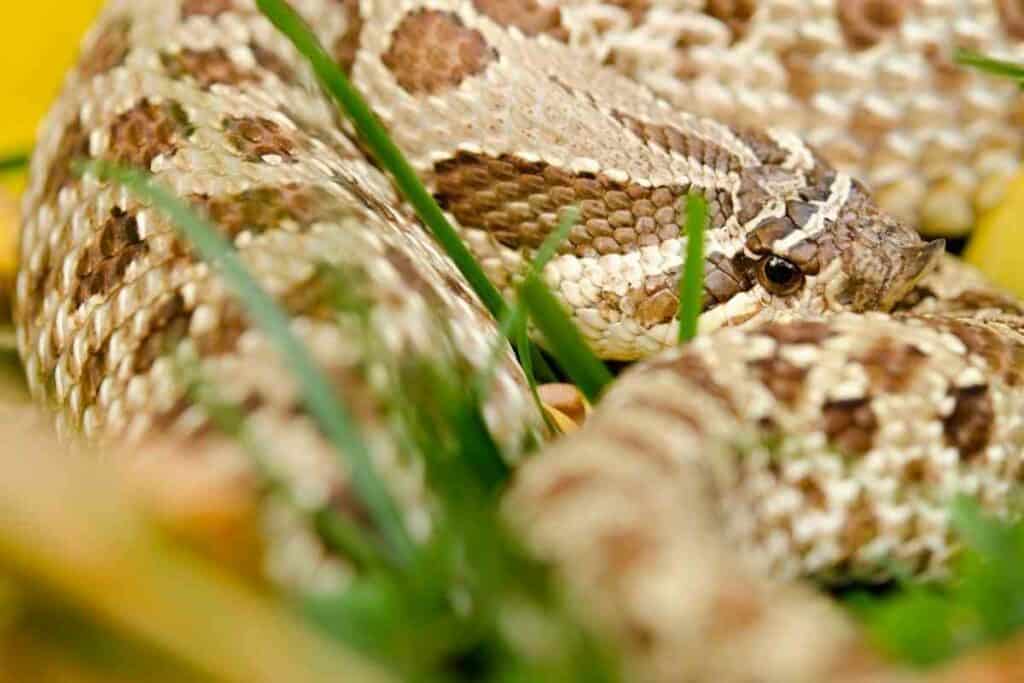
Unlike the Western Hognose Snake, the Caramel Anaconda Hognose Snake is not as tolerant of cold weather and should be kept in a warm environment.
They also require a diet that is high in protein.
If you are looking for a beautiful, docile pet snake, the Caramel Anaconda Hognose Snake may be the perfect choice for you.
6. Coral Hognose Snake Morph
Coral Hognose Snake Morphs look similar to the Snow color pattern of the Snow Hognose.
The main distinction is that the Coral form has more distinct and apparent features as opposed to the snow. It’s almost as if someone edited a snow photo with a “vivid” filter.
Additionally, the Coral Hognose Snake also has some orange markings on its back.
The Coral Hognose Snake is a beautiful and unique morph that you should definitely check out if you’re looking for something different!
7. Eastern Hognose Snake
The Eastern Hognose Snake is a small, non-venomous snake found in the eastern United States.
They are usually gray or light brown in color with a black stripe running down the middle of their back.
These snakes are common in open woodlands and meadows, but can also be found in residential areas.
The Eastern Hognose Snake is a constrictor and feeds mainly on rodents, but will also eat lizards, frogs, and small birds.
They have a hinged lower jaw which allows them to swallow prey much larger than their head size.
8. Evans Hypo Hognose Snake
The Evans Hypo Hognose Snake is a morph of the Western Hognose Snake.
The biggest difference between the Evans Hypo and other Western Hognose Snakes is the color.
Most Western Hognose Snakes are a light brown or gray in color with darker markings.
The Evans Hypo has a much lighter color and is considered to be one of the most beautiful hognose morphs available.
9. Extreme Albino Red Anaconda Hognose Snake
The Extreme Albino Red Anaconda Hognose snake morph is also a western Hognose snake that strongly resembles its relative, the Red Albino Anaconda.
But this Hognose has more vivid hues than its counterpart, which is why it has been labeled “extreme.”
This Hognose still has a yellow-tan background color with a reddish hue that covers its body. The belly is pale white, and the eyes are red.
10. Frosted Hypo Hognose Snake
The frosted hypo hognose snake is a beautiful variation of the hognose snake.
They are characterized by their light-colored body with darker markings and a frosted appearance.
Frosted hypo hognose snakes are a popular choice for snake enthusiasts, due to their unique look and personality.
Like all hognose snakes, frosted hypo hognose snakes are non-venomous and pose no threat to humans.
They are typically gentle creatures that make great pets. Frosted hypo hognose snakes can be found in the wild throughout the United States.
11. Jaguar Hognose Snake
The Jaguar Hognose Snake is a morph of the Western Hognose Snake.
It is so named because it has a pattern on its back that resembles the coat of a jaguar.
The Jaguar Hognose Snake is typically darker in color than other Western Hognose Snakes, and it may also have a lighter belly.
12. Lavender Hognose Snake
The Lavender Hognose Snake is a subspecies of the Western Hognose Snake.
They are found in the Great Plains and the Rocky Mountains regions of North America.
These snakes are typically light purple or pink in color, with darker markings on their backs.
They grow to an average length of 18 inches and can live for up to 15 years.
13. Normal Axanthic Hognose Snake Morph
The normal axanthic hognose snake is a morph that lacks any type of coloration.
This makes them easy to identify in the wild, as they will stand out against their natural surroundings. They are typically gray, with dark brown/gray spots.
Axanthic hognose snakes are found in the eastern United States and can be found in a variety of habitats.
They prefer areas with sandy soils, where they can burrow easily.
14. Pink Pastel Hognose
The pink pastel hognose snake is a variant of the hognose snake.
This snake is known for its striking pink coloration.
The Pink Pastel Anaconda Hognose snake, which has a recessive gene trait that gives it an unusual appearance, is one of the more interesting hognose snake morphs at approximately 18 to 20 inches long and 2 inches broad.
15. Red Albino Anaconda
The Red Albino Anaconda is a western Hognose snake with a peach-yellow skin tone and blotches on its body that begins as pale orange or orangish and becomes darker as the snake grows.
These markings will get larger and more distinct as they grow, and they will stretch out as the Anaconda matures.
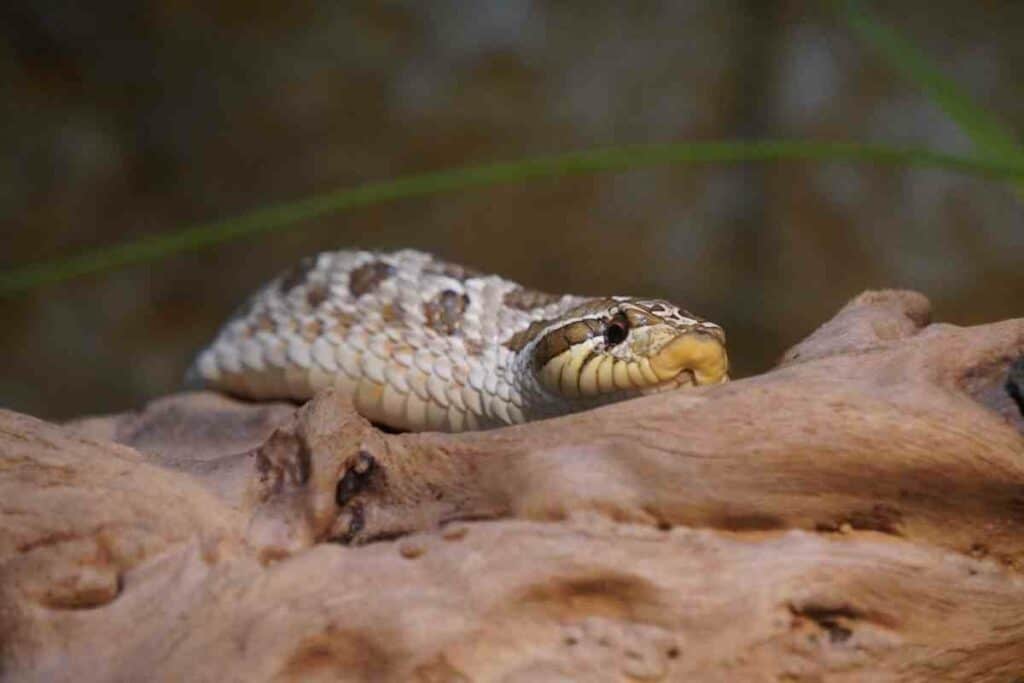
16. Snow Western
The snow western hognose has a lovely, faint pattern. In addition, their hues are subtle yet attractive.
It’s almost as if the ruby-red eyes bring out the faded pink splotches and cream, skin-color white base of this particular Hognose Snake.
17. Super Arctic Conda Hognose Snake
The Super Arctic Conda Hognose Snake is a unique and beautiful snake that can be found in North America.
This snake is typically off-white skin color, with light-colored blotches that is brown in color.
18. Toffeeconda Hognose Morph
The toffeeconda hognose snake is a morph of the common hognose snake.
This morph is characterized by its light brown or tan coloration, with darker markings along the dorsal surface.
The toffeeconda hognose is also noted for its distinctive “candy corn” pattern on the snout, which is thought to be responsible for its common name.
19. Toffeeglow Hognose Snake
The Toffeeglow Hognose snake is the offspring of the Toffeebelly Hognose and T-Albino, two Hognoses that produce a visual double recessive gene in the Toffeeglow Hognose snake.
This snake is a beautiful light yellow color with a pink undertone and has red eyes.
The Toffeeglow Hognose snake is not only a beautiful addition to your collection, but it is also one of the most docile snakes available.
20. Toxic Hognose Snake
It has a grayish-brown coat with grayish-white markings that cover its body.
When fully grown, it has a thick midsection that may reach a length of 18 to 20 inches long.
The Toxic Hognose Snake features a V-shaped tongue, flat brown and white eyes, and a flat uplifted nose.
21. Western Hognose
The Western Hognose is the most common hognose snake and is a small, non-venomous found in North America.
They are easily recognized by their upturned snout, which gives them their common name “Hognose”.
These snakes are fossorial, meaning they spend most of their time buried underground.
They are found in the Great Plains and Rocky Mountain regions of the United States.
Conclusion
This list of 21 Western Hognose Morphs is a good starting point for anyone looking to learn more about this snake.
With so many different colors and patterns, it can be fun to try and identify all the morphs you see in the wild.

